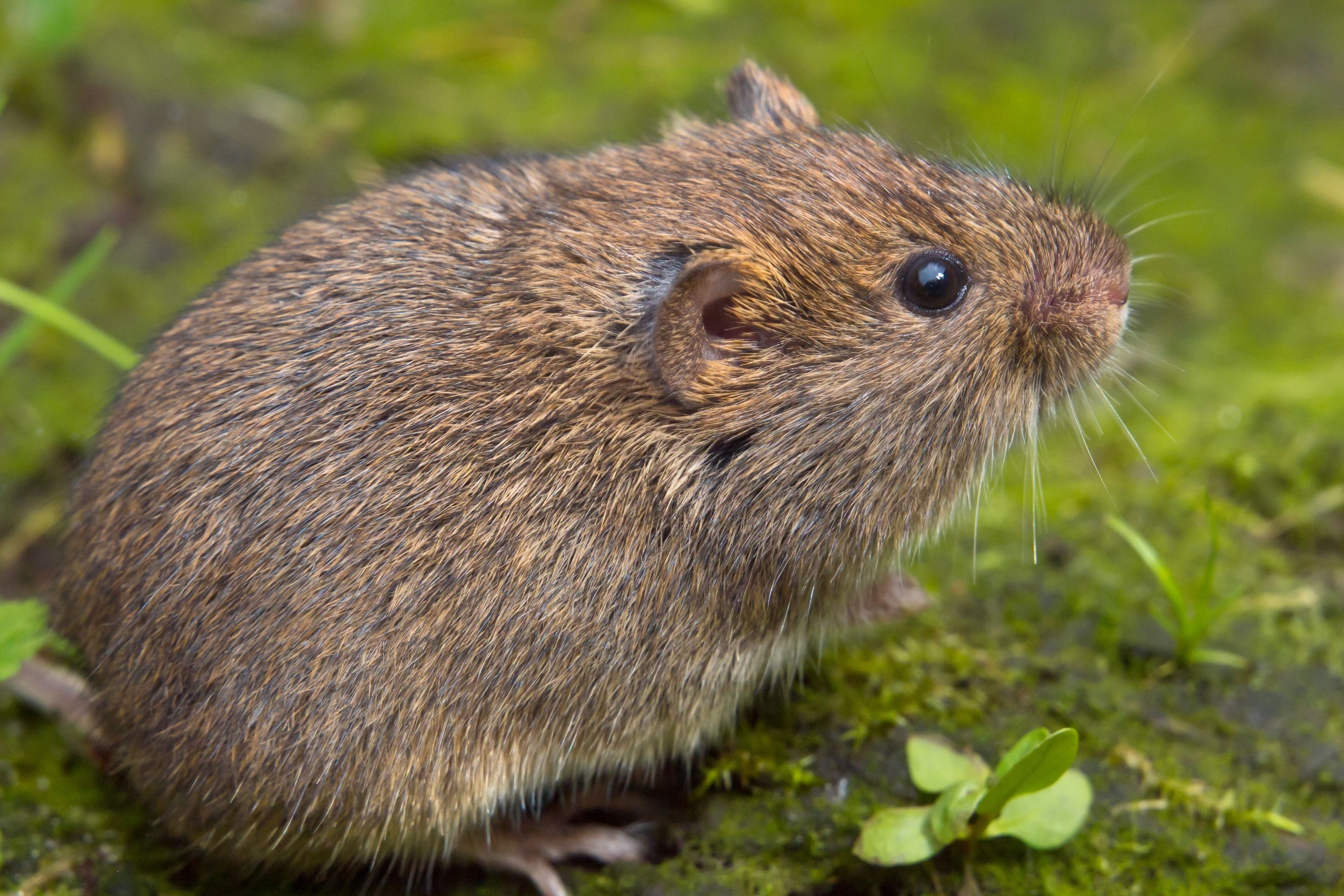Woodland vole
(Microtus pinetorum)

Description
The woodland vole (Microtus pinetorum) is a small vole found in eastern North America. It is also known as the pine vole. The woodland vole has a head and body length ranging between 3.25-4.75 in (83-121 mm) with a 0.5-1.5 in (13-38 mm) short tail. Its weight ranges between 0.5-1.3 oz (14-37 g). It has a brown (light or dark) dorsal region with a whitish or silvery underside. The eyes, external ears and tail are reduced to adapt to their partially subterranean lifestyle. The woodland vole lives throughout the eastern United States, ranging as far as Nebraska, Kansas, Oklahoma, and Texas. They inhabit deciduous forests, dry fields, and apple orchards. Voles prefer wooded areas with high vertical vegetative stratification but also evergreen shrubs, ground cover, and old fallen logs. Deciduous forests with moist, friable soils are suitable for burrowing and voles are most abundant in these habitats. However, they can also be found in other habitats from dry fields to the edges of coastal bays. In addition, apple orchards are a favorite habitat. The root systems of trees are an important food source for vole and thus tree spacing affects the density of vole populations. Voles prefer to live in soils ranging from loam/peat moss mixtures, to gravel or stone soils, but not very dry soils. Alfisol and Ultisol soil types are particularly favored due to being favorable to the vole's burrowing system. Voles feed on both the roots and stem system and the vegetation of plants, as well as fruits, seeds, bark, subterranean fungus and insects. Because they feed on roots and tubers, voles do not need to drink water much. Voles cache food, primarily during the winter. Voles spend most of their time underground in their burrow systems and seldom venture into the surface. This makes them safe from hawks and owls. Other predators of voles include snakes, weasels and mountain lions. They are also susceptible to ectoparasites like lice, fleas, mites, and chiggers. Woodland voles live in family groups in burrow systems in home ranges around 14.75-17.75 in (40-45 cm). The burrows are exclusive to the family groups, however a group usually does not need to defend its burrows as other voles usually will not invade them. The size and location of the home range and dispersal of groups are limited by neighboring family groups. Family groups of the vole are made of a breeding female, a breeding male, their 1-4 offspring and sometimes a few other members that serve as helpers.
Taxonomic tree:







